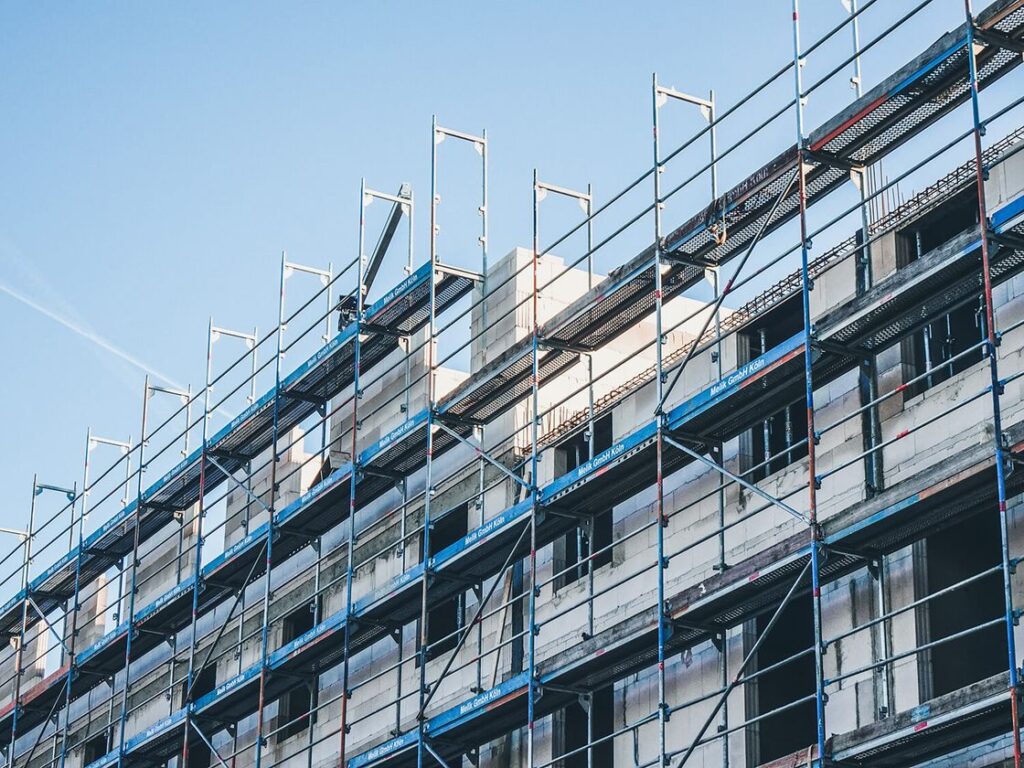Index
Unauthorized construction is a significant issue affecting many people in Italy, and understanding the risks of unauthorized construction is essential to avoiding legal problems and penalties. This phenomenon occurs when construction or modification work is carried out without the necessary permits or in violation of urban planning regulations. The consequences can be serious and include hefty fines, demolition of unauthorized works, and, in some cases, criminal proceedings. In this document, we will explore in detail the legal implications of illegal building and discuss strategies for avoiding them, thus ensuring compliance with applicable laws and protecting your building stock.
Introduction to illegal building
Definition of illegal building
Illegal building refers to any construction carried out without the required permits or in violation of current planning regulations. This can include the construction of new buildings, unauthorized extensions or structural modifications, or even changes in use of existing buildings. In practice, any work that modifies the original state of a property without the proper permit constitutes illegal construction. Local authorities define specific rules governing construction and building modifications, and violating them can lead to serious legal consequences. Understanding what constitutes illegal construction is essential to avoid incurring penalties, which can range from fines to demolition of the completed works. Being aware of the rules and any restrictions is essential for anyone intending to undertake construction work.
Current building regulations
The current building regulations in Italy are complex and multifaceted, comprising a series of laws and regulations at the national, regional, and municipal levels. The Consolidated Law on Building (Presidential Decree 380/2001) represents the main regulatory framework at the national level, establishing the general rules for the construction, renovation, and maintenance of buildings. The regions, however, have the power to enact specific laws that can supplement or modify national provisions. Furthermore, each municipality adopts its own General Regulatory Plan (PRG), which defines the methods of use of municipal land and the technical specifications for building interventions. To avoid building abuse, it is essential to know and comply with these regulations, requesting all necessary permits before starting any work. Non-compliance can result in severe penalties, including demolition of unauthorized works and fines.
[cta-casavo title="Do you want to know the value of your home?" text="It's free and instant."]
Legal and administrative consequences
Abuse of construction: what are the risks
Abuse of construction involves a series of significant legal and administrative risks. First, those who commit illegal construction may be subject to financial penalties that vary based on the severity of the violation and the location of the works. In addition to fines, there is also the risk of demolition orders for illegally constructed structures, which entails additional costs for the owner. In some cases, illegal construction can result in criminal proceedings, especially when the unauthorized work compromises public safety. Legal consequences may also include confiscation of the property and its acquisition by the municipality. Furthermore, illegal construction can negatively impact the market value of the property and complicate any future real estate transactions. To avoid these risks, it is crucial to comply with local building regulations and request the necessary permits before undertaking any construction or alteration work.
Penalties and Fines
Penalties for illegal construction in Italy are severe and designed to discourage illegal construction. Fines can vary significantly, from relatively low to very high, depending on the type and extent of the abuse. The law requires that fines be calculated in proportion to the commercial value of the illegal work and the urban damage caused. In addition to fines, authorities can issue a demolition order, ordering the violator to restore the premises to their original condition within a specific timeframe. If the offender fails to comply with the order, the municipality can proceed with the demolition, charging the costs to the property owner. In some cases, confiscation of the illegal property may be required. These measures underscore the importance of obtaining the necessary permits and complying with zoning regulations to avoid significant financial and legal consequences.
How to prevent illegal building
Planning and necessary permits
To prevent illegal building, careful planning and obtaining the necessary permits are essential steps. Before starting any construction project, it is essential to inform yourself about local zoning regulations and check which permits are required. Generally, it is necessary to obtain a building permit, which certifies the project's compliance with municipal regulations. For minor interventions, a certified notification of commencement of activity (SCIA) or a certified notification of commencement of works (CILA) may suffice. It is advisable to consult a qualified technician, such as an architect or engineer, to ensure the project complies with all requirements. Consulting the municipal technical office can also provide useful guidance. Careful planning and obtaining appropriate permits not only ensures the legality of the work, but also avoids future legal problems and penalties, protecting the value of the property.
Consulting with industry experts

Consulting with industry experts is a crucial step in preventing building abuse and ensuring that each project complies with current regulations. Architects, engineers, and surveyors are professionals who can offer valuable advice and guide the planning and construction process. These experts have the expertise necessary to interpret zoning laws and can assist in the preparation and submission of the documentation required to obtain the required permits. Additionally, they can provide a technical assessment of the project, ensuring it complies with safety and sustainability standards. Involving experts from the early stages of a construction project not only reduces the risk of penalties, but can also optimize project time and costs. Their experience and local knowledge of regulations represent a valuable investment in avoiding legal complications and ensuring the success of the construction project.
Remedies and Regularization
Regularization Procedures
Regularization procedures represent an important opportunity to regularize illegally constructed buildings. In Italy, there are various ways to regularize illegal construction, depending on the type and severity of the violation. One of the most common is the request for a regularization permit, which allows for post-contract regularization by paying a financial penalty. It is essential that the work complies with urban planning regulations at the time of the request, otherwise the regularization cannot be granted. In some cases, building amnesties have been established, offering the possibility of regularizing specific violations within legally established deadlines. However, not all works can be regularized, especially if built in areas subject to landscape or environmental restrictions. Consulting an expert professional can facilitate understanding the process and identifying the most suitable solution for regularizing the property.
Costs and timeframes for regularization
Regularizing a building violation involves costs and timeframes that vary based on the complexity of the intervention and local regulations. Costs may include professional assistance fees, administrative fines, and any construction fees due. In particular, fines for obtaining a regularization permit are often calculated based on the value of the illegal construction, with amounts that can be significant. The time required to complete the regularization process can also vary: it may depend on the efficiency of the municipal technical office and the speed with which the necessary documents are submitted. Generally, the more complex the illegal construction, the longer and more expensive the regularization process will be. It is important to start the process as soon as possible to avoid further legal and financial complications. Careful planning and expert support can help better manage costs and timelines.
Examples and case studies
Noted cases of illegal building
In Italy, several cases of illegal building have risen to national prominence, highlighting the problems associated with illegal construction. One of the most well-known concerns the illegal constructions in the Ischia area, where numerous homes were erected without permits in areas at risk of flooding. These abuses have raised concerns about public safety, especially following seismic events that have further exposed the vulnerability of these structures. Another significant example is represented by illegal villas built in protected areas such as national parks, where violations have caused serious environmental damage. These cases underscore the importance of complying with urban planning and environmental regulations to prevent irreversible damage to the land and ensure community safety. The severe legal actions taken in these situations demonstrate the authorities' determination to combat illegal construction and promote sustainable urban development.
Lessons learned and practical advice
The analysis of known cases of illegal construction reveals important lessons that can guide more responsible building practices. First and foremost, it is clearly crucial to comply with urban planning and environmental regulations to avoid penalties and preserve public safety. Careful planning and consultation with industry experts are essential to ensure that each project complies with applicable laws. Furthermore, it is important to be aware of the characteristics of the land, especially in areas prone to natural hazards such as landslides or floods. Taking a proactive approach to permit management and risk assessment can prevent significant damage and high costs. Finally, transparency and collaboration with local authorities can facilitate the construction and regulatory process, ensuring that urban development occurs sustainably and safely. These practical tips can contribute to a more responsible and informed construction future.
[cta-casavo title="Are you looking for a home?" text="We'll help you make the right choice."]

